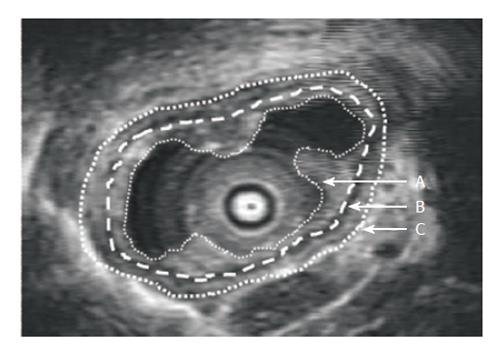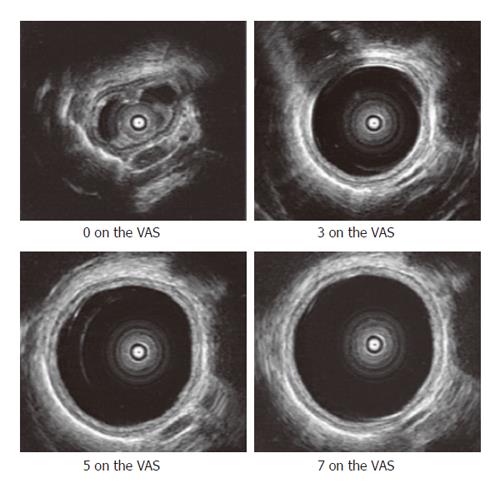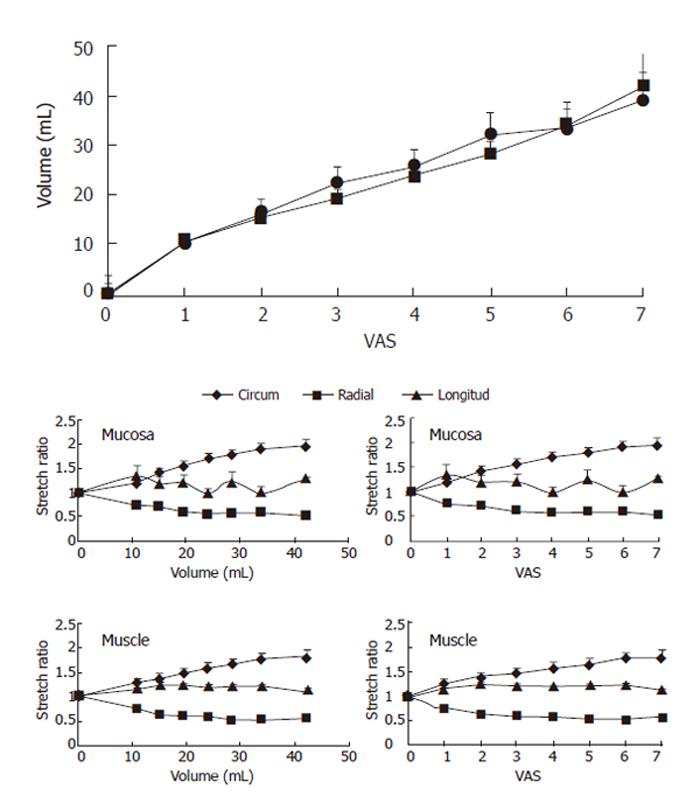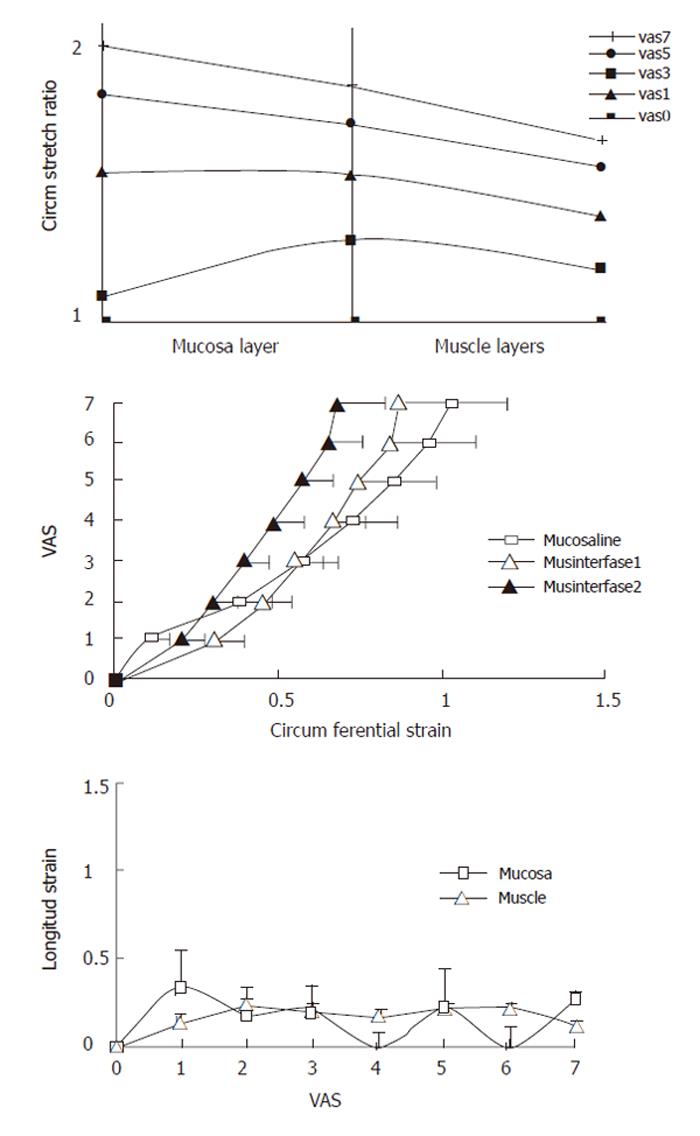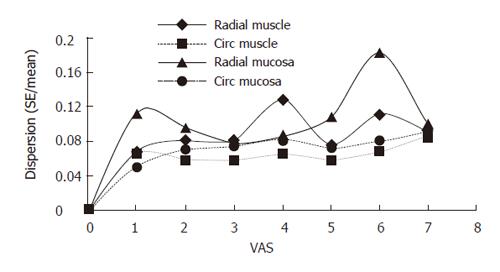Copyright
©2006 Baishideng Publishing Group Co.
World J Gastroenterol. Jul 28, 2006; 12(28): 4517-4523
Published online Jul 28, 2006. doi: 10.3748/wjg.v12.i28.4517
Published online Jul 28, 2006. doi: 10.3748/wjg.v12.i28.4517
Figure 1 Transversal ultrasonographic image of the non-distended esophagus.
The stippled lines indicate manual tracings of the mucosal inner surface (A) and the inner (B) and outer (C) lining of the combined muscle layers.
Figure 2 Transversal ultrasonographic images of the esophagus at different sensory perception levels.
The esophagus is fairly circular at 3 on the visual analogue scale. The numbers refer to the sensory intensity at a visual analog scale with 5 as the pain threshold.
Figure 3 Illustration of the relation between volume and sensory intensity on the visual analogue scale (VAS) with 5 as the pain threshold (top graph).
Since there was no difference in the curves obtained (triangles) before and during (squares) infusion of butylscopolamine, data obtained during butylscopolamine are given in this paper. The four figures show the circumferential, radial and longitudinal stretch ratios as function of volume and VAS in the mucosa and muscle layers (the circumferential data are from the mucosal surface and the outer muscle surface).
Figure 4 Sensory intensity on the visual analogue scale (VAS) with 5 as the pain threshold as function of the luminal cross-sectional area (CSA).
A large variation was found in volunteers, which speaks in favor of using non-dimensional measures as the stretch ratio.
Figure 5 The top graph shows the circumferential stretch ratio at the mucosal surface (left), the interface between the submucosa and circumferential muscle layer (middle) and the serosal surface (right).
The middle graph shows the same data in terms of the circumferential strain and sensory intensity on the visual analogue scale (VAS). There was a strain gradient throughout the esophageal wall with the largest deformation in the mucosa. The bottom graph shows the longitudinal strain as function of the sensory level. No increase in strain was seen during sensory intensity was increased. For convenience the data from all VAS are not shown.
Figure 6 Dispersion (SE/mean) of the circumferential and radial strains in the mucosa and muscle.
The dispersion was the lowest in circumferential direction.
- Citation: Larsen E, Reddy H, Drewes AM, Arendt-Nielsen L, Gregersen H. Ultrasonographic study of mechanosensory properties in human esophagus during mechanical distension. World J Gastroenterol 2006; 12(28): 4517-4523
- URL: https://www.wjgnet.com/1007-9327/full/v12/i28/4517.htm
- DOI: https://dx.doi.org/10.3748/wjg.v12.i28.4517













